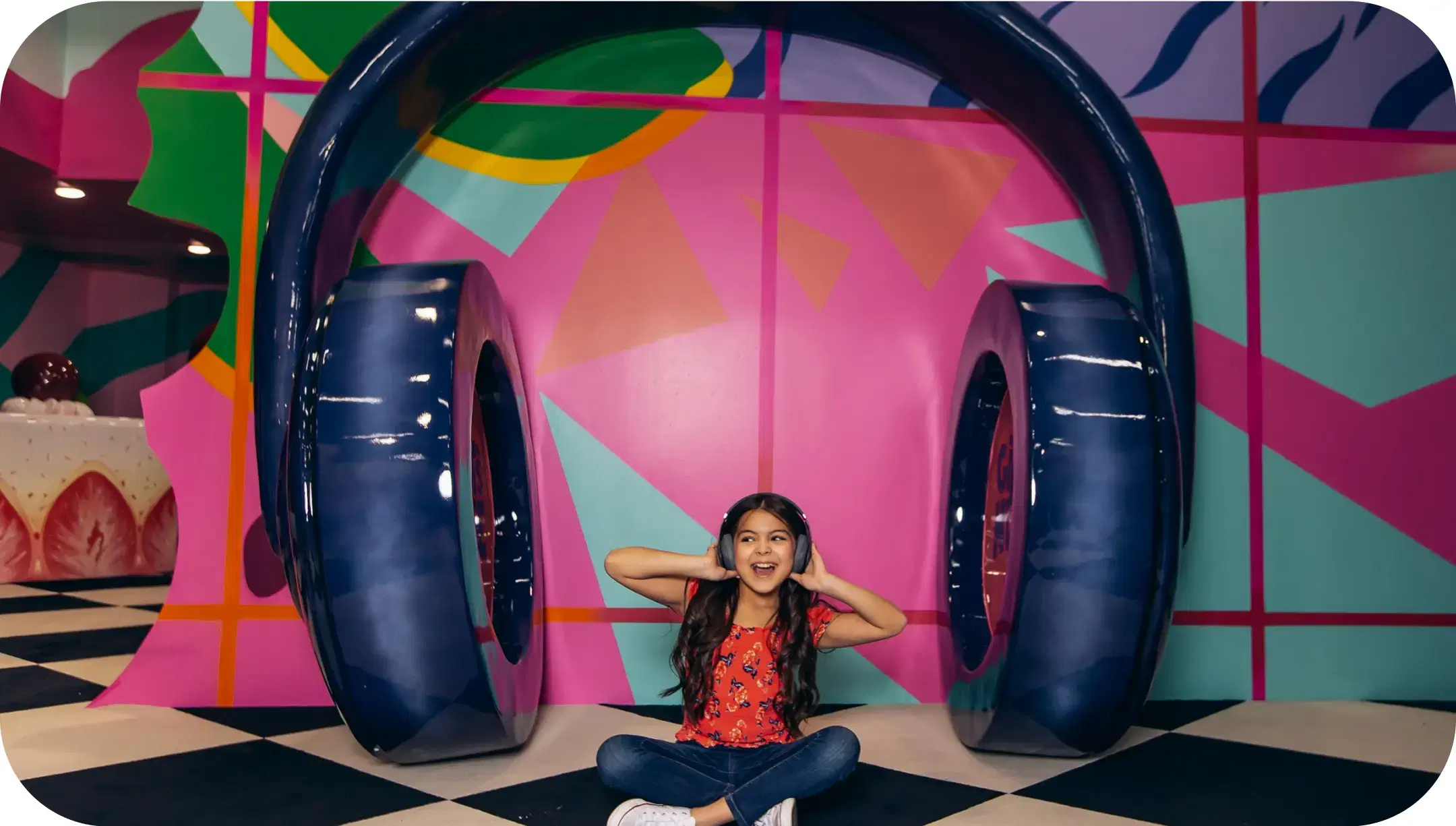In September 1781, a group of 44 settlers of diverse backgrounds—Native American, African, and European—embarked on a journey from present-day northern Mexico. They traversed over a thousand miles to establish a farming community that would become the foundation of Los Angeles. This settlement, known as El Pueblo de Los Angeles, is recognized as the birthplace of the city.
Today, El Pueblo de Los Angeles Historical Monument stands as a testament to the city’s rich heritage. Spanning 44 acres, this district offers a glimpse into Los Angeles’ multifaceted past, reflecting influences from Spanish, Mexican, and American periods. Visitors can explore various historical structures, museums, and cultural sites that narrate the city’s evolution.
Located at 125 Paseo de la Plaza, Los Angeles, CA 90012, the historical monument is easily accessible and welcomes over two million visitors annually. Its central location near the Los Angeles River makes it a focal point for those eager to delve into the city’s origins and cultural diversity.
Olvera Street: A Cultural Marketplace
At the heart of El Pueblo lies Olvera Street, a vibrant Mexican marketplace that has become one of Los Angeles’ most popular tourist destinations. Established on April 20, 1930, Olvera Street was part of a preservation effort to honor the city’s Mexican heritage. The marketplace features a tree-shaded, brick-lined corridor bustling with shops, eateries, and vendors.
Visitors to Olvera Street can immerse themselves in a rich cultural experience. The area is lined with stalls offering traditional Mexican crafts, clothing, and souvenirs. Authentic Mexican restaurants serve a variety of culinary delights, from tacos to tamales, allowing guests to savor the flavors of Mexico in the heart of Los Angeles.
Throughout the year, Olvera Street hosts numerous traditional events and festivals. Celebrations such as Cinco de Mayo, Dia de los Muertos, and Las Posadas bring the community together, offering vibrant music, dance, and cultural performances that are a monument to the enduring spirit of Los Angeles’ Mexican roots.
Historic Landmarks and Museums
El Pueblo de Los Angeles Historical Monument is home to several significant landmarks that chronicle the city’s history. One notable monument is the Avila Adobe, constructed in 1818, which stands as the oldest existing residence in Los Angeles. This adobe home offers visitors a glimpse into early 19th-century Californian life, with rooms furnished to reflect the era’s lifestyle.
Another prominent structure is the Old Plaza Firehouse, built in 1884. As the city’s oldest fire station, it now serves as a monument and museum showcasing firefighting equipment and memorabilia from the late 19th and early 20th centuries. The museum provides insight into the evolution of fire safety and the daily lives of the firefighters who once served there.
The Italian American Museum of Los Angeles, located within the historic Italian Hall built in 1908, celebrates the contributions of Italian Americans to the city’s development. The museum features exhibits that explore the Italian American experience in Southern California, highlighting stories of immigration, community building, and cultural preservation.
The Central Plaza
At the core of El Pueblo de Los Angeles Historical Monument lies the Central Plaza, also known as Los Angeles Plaza Park. Established in the 1820s, this traditional Mexican plaza has long served as a communal gathering spot. Surrounded by historic buildings, the plaza offers a picturesque setting adorned with statues of significant figures, including King Carlos III of Spain and Governor Felipe de Neve.
The Central Plaza is more than just a historical site; it’s a vibrant space that hosts numerous cultural events, performances, and festivals throughout the year. From traditional dance performances to public art displays, the plaza reflects the diverse heritage of Los Angeles and serves as a living testament to the city’s dynamic cultural landscape.
Visitors can often find musicians, dancers, and artists showcasing their talents, making the plaza a lively hub of activity. Whether attending a scheduled event or simply exploring the area, guests are immersed in the rich traditions that have shaped Los Angeles over the centuries.
Art and Murals
Artistic expression is a cornerstone of El Pueblo, with numerous murals and artworks adorning its historic walls. One of the most renowned pieces is “América Tropical,” a mural created by Mexican artist David Alfaro Siqueiros in 1932. Located above Olvera Street, this 80 by 18-foot mural depicts a Mexican Indian crucified on a cross beneath an American eagle, conveying a powerful political message about oppression and resilience.
For decades, “América Tropical” was concealed under layers of whitewash due to its controversial subject matter. However, it has been meticulously restored and is now accessible to the public, accompanied by the América Tropical Interpretive Center. This center provides context about the mural’s history, significance, and the artist’s vision, offering visitors a deeper understanding of its impact.
Beyond “América Tropical,” the monument features various other artworks that celebrate the multicultural fabric of Los Angeles. These pieces honor the contributions of different communities, narrate historical events, and add vibrant color to the district, making art an integral part of the El Pueblo Historical Monument experience.
Accessibility and Visitor Information
El Pueblo de Los Angeles Historical Monument is committed to being accessible to all visitors. The site is open daily from 8 a.m. to 10 p.m., though individual museum and shop hours may vary. It’s advisable to check specific venues for their operating times to plan your visit accordingly.
The monument is conveniently located across from Union Station, the city’s primary transportation hub, making it easily reachable by various modes of public transit, including buses and trains. For those driving, several parking facilities are available nearby, offering both short-term and long-term options. Bicycle racks are also provided for visitors opting for eco-friendly transportation.
Admission to the monument and many of its attractions is free, allowing guests to explore the de Mayo, Dia de los Muertos, and Las Posadas bring the area to life with music, dance, and vibrant decorations. These cultural festivities make Olvera Street an essential stop for anyone seeking to experience the spirit of Los Angeles through its deep-rooted traditions.
Guided Tours and Educational Programs
For those looking to gain deeper insight into El Pueblo Historical Monnument’s historical significance, guided tours offer an engaging way to explore the area. Led by knowledgeable docents, these tours provide historical context, anecdotes, and detailed information about the district’s landmarks. Walking tours typically highlight key sites such as Avila Adobe, Plaza Church, and the Central Plaza.
Educational programs cater to students and history enthusiasts alike. Schools often arrange field trips that allow children to experience living history, engaging with costumed interpreters and hands-on exhibits. Workshops and lectures on topics such as Spanish colonial history and Mexican-American heritage are also available throughout the year.
Self-guided exploration is another option for visitors who prefer to set their own pace. Informational plaques, interactive exhibits, and digital resources help guests navigate the district and understand its historical context. With so much to learn and experience, the El Pueblo monument offers an enriching journey into the past.
Festivals and Cultural Events
El Pueblo de Los Angeles Historical Monument is not just a place to learn about the past—it is a living, breathing space where history and tradition come to life through cultural events and festivals. Throughout the year, this district hosts a variety of celebrations that highlight the rich traditions of the many communities that have shaped Los Angeles. One of the most anticipated events is Día de los Muertos, where the plaza is transformed with altars, marigold flowers, music, and performances honoring the dearly departed.
In addition to Día de los Muertos, Olvera Street is the site of numerous festivities that celebrate Mexican and Indigenous heritage. Las Posadas, a nine-night Christmas reenactment of Mary and Joseph’s search for shelter, has been a staple event here for over 80 years. Cinco de Mayo celebrations bring lively mariachi music, folkloric dances, and parades to the area, drawing visitors from all over Los Angeles.
Beyond Mexican cultural events, El Pueblo also honors the city’s multicultural influences. The Lantern Festival, which celebrates the Lunar New Year, and commemorations of Indigenous Peoples’ Day are also held within the district. These events serve as a testament to the diverse cultural fabric of Los Angeles and provide visitors with an opportunity to engage with history through performance, music, and community gatherings.
Preservation Efforts
El Pueblo de Los Angeles Historical Monument has endured for over two centuries, thanks to ongoing preservation efforts that protect its buildings, artifacts, and cultural heritage. Organizations, historians, and community members work tirelessly to ensure that the site remains a vibrant and accurate representation of the city’s origins. Without these efforts, many of the historic structures and traditions that define this district might have been lost to time.
One of the most significant restoration projects involved the Avila Adobe. After suffering damage from the 1971 Sylmar earthquake, extensive work was done to reinforce the structure while maintaining its original architectural integrity. Today, visitors can walk through the carefully preserved rooms, furnished to reflect life in early 19th-century Los Angeles.
Preservation extends beyond buildings—ongoing projects aim to maintain the cultural traditions of the area. Organizations continue to document oral histories, conserve murals, and support traditional artisans who sell their crafts in Olvera Street. These efforts ensure that El Pueblo remains not just a relic of the past but a living, evolving space that continues to share the story of Los Angeles with future generations.
Nearby Attractions
While El Pueblo de Los Angeles Historical Monument itself offers a wealth of historical and cultural experiences, its central location places visitors within walking distance of other notable landmarks. Just steps away is Union Station, the grand transportation hub of Los Angeles, known for its stunning blend of Spanish Colonial Revival and Art Deco architecture. The station is not only a gateway to the city but also a monument and piece of history in its own right, having served as a backdrop for numerous films and cultural moments.
The Chinese American Museum, located within the historic Garnier Building, is another significant site near El Pueblo. This museum tells the story of Chinese immigrants in Los Angeles and their contributions to the city’s development. Through exhibits, artifacts, and oral histories, visitors can explore the challenges and triumphs of one of Los Angeles’ oldest communities.
Also within walking distance is the Italian American Museum of Los Angeles, housed in the historic Italian Hall. This museum showcases the experiences of Italian immigrants in the city, with exhibits on their influence in business, food, and culture. Together, these neighboring attractions provide a deeper understanding of the diverse communities that have helped shape Los Angeles into the city it is today.
World of Illusions: A Modern Attraction
Amid the deep historical significance of El Pueblo de Los Angeles Historical Monument, the city’s diverse attractions extend beyond the past. One such destination is the World of Illusions, an interactive museum in Los Angeles that offers a playful yet mind-bending experience. With four distinct exhibits, this attraction provides a unique contrast to the historical monument.
The Upside Down House defies gravity, offering visitors the surreal sensation of walking on ceilings, standing on walls, and experiencing a home from an entirely new perspective. Every room is inverted, creating a visually stunning and disorienting experience. Guests can pose for photographs that make it appear as though they are standing on the ceiling.
At the Giant’s House, visitors shrink to miniature proportions, stepping into a world where everyday objects become oversized. This exhibit creates the illusion of walking through a space designed for giants, with towering furniture and massive household items. It’s a whimsical and playful way to engage with perspective and scale.
The Museum of Illusions features over 30 larger-than-life 3D artworks that interact with visitors. Each painting creates an immersive scene, from surviving a shark attack to dangling from the edge of a skyscraper. This exhibit is designed for creative photography, where guests become part of the illusions.
For those looking to unleash stress, Smash It provides a therapeutic and entertaining experience. Here, visitors can break glass objects in a controlled environment, allowing for an exhilarating release of energy. It’s a modern contrast to the historical reflections of El Pueblo, yet both destinations celebrate Los Angeles’ spirit of creativity and exploration.
Planning Your Visit
A trip to El Pueblo de Los Angeles Historical Monument offers an opportunity to connect with the city’s deep historical roots. From its centuries-old buildings to its cultural festivities, this district tells the story of Los Angeles’ evolution. Whether exploring its markets, learning from its museums, or simply soaking in the vibrant atmosphere, visitors can expect an unforgettable experience.
Combining a visit to El Pueblo with modern attractions like the World of Illusions offers a dynamic experience of the city. Both destinations highlight different facets of Los Angeles—one rooted in tradition, the other embracing playful creativity. No matter the focus of your visit, these sites reflect the diverse and ever-evolving identity of Los Angeles.
What is El Pueblo de Los Angeles Historical Monument, and why is it significant?
El Pueblo de Los Angeles Historical Monument is a preserved district that marks the birthplace of Los Angeles. This historical site showcases buildings, museums, and cultural landmarks that highlight the city’s Spanish, Mexican, and American influences. Visitors can explore its vibrant marketplace, historic structures, and traditional events year-round.
How can I visit both El Pueblo and the World of Illusions in Los Angeles?
El Pueblo de Los Angeles Historical Monument is located in the city’s downtown area, making it easily accessible for visitors. The World of Illusions, another popular attraction, is located in Hollywood and offers a completely different experience with interactive exhibits. Exploring both allows visitors to see Los Angeles’ historical depth and creative modern attractions.
Are there guided tours available at El Pueblo de Los Angeles Historical Monument?
Yes, guided tours of this historical site are available for visitors who want to learn more about its history. These tours provide insights into the significance of the monument, including its oldest buildings, cultural landmarks, and famous events. They are an excellent way to experience the deep-rooted history of Los Angeles.







